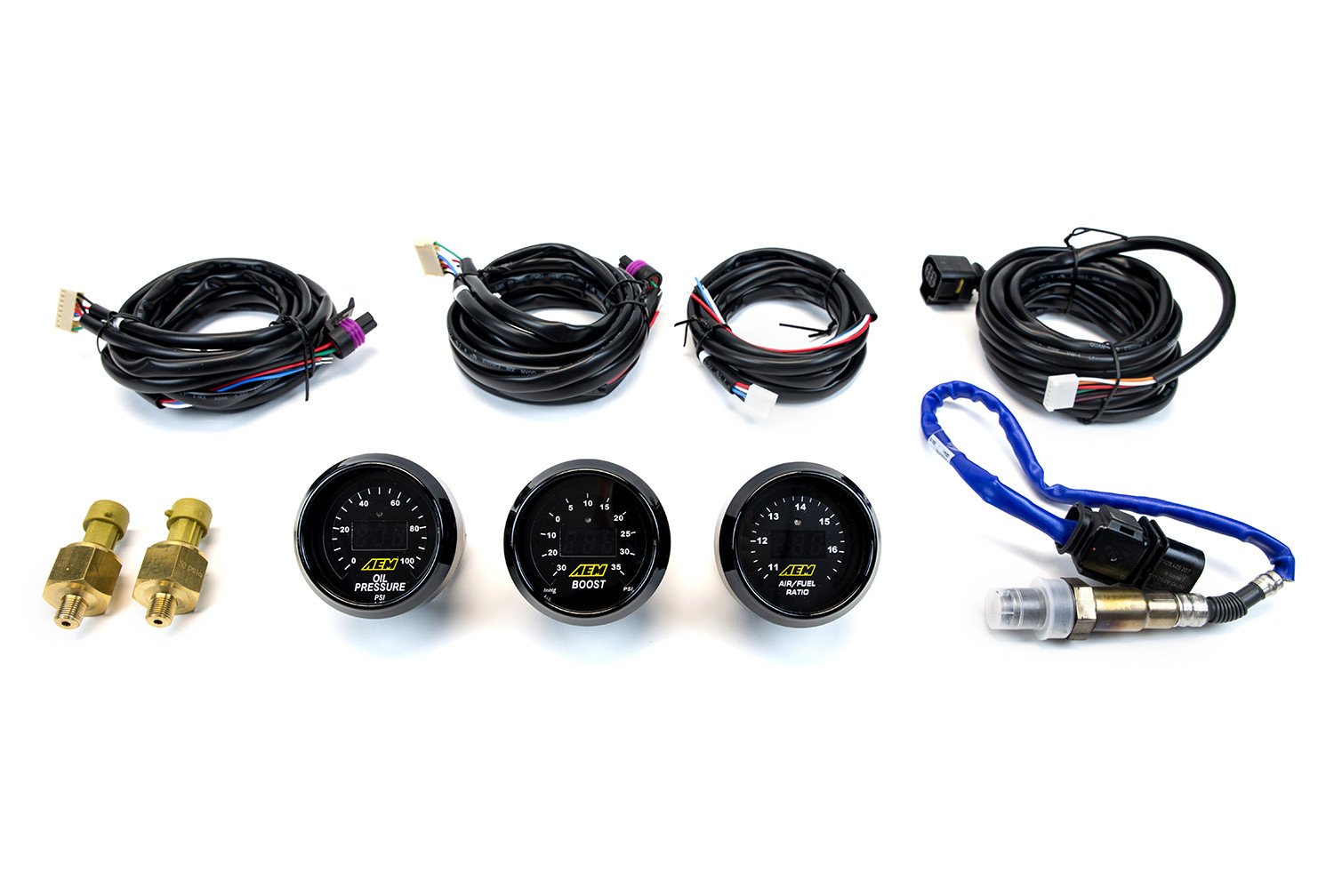3 Gauges Every Turbo Car Needs!
Aftermarket Gauges - so many to chose from! A quick search for aftermarket gauges yields many different results, with each gauge monitoring different aspects of the cars performance. From Intake and Exhaust Temps, Air Fuel Ratio's, Boost, Oil and Water Temp, Oil Pressure, and Volts. Add to the mix the different manufacturers, and you'll quickly see that hundreds of options are available, and all at different price ranges.
Despite the sea of choices, there are three gauges every turbocharged car or truck should have. These three gauges monitor different areas of engine health to ensure that nothing goes wrong, and the driver is made aware of anything that could harm the motor or turbocharger. The three gauges you'll need are:
By installing these gauges, you'll be able to see how much boost you're making, ensure your engine is making proper oil pressure important for lubrication of the turbo and engine internals, and keep an eye on the AFR's to make sure you're getting the most power possible. Below we'll explain what each gauge does, and they'll benefit your build.
Boost/PSI/Vacuum Gauges
A boost gauge helps to monitor boost, and it's important to pick a reputable brand. Running too much boost could damage your engine and lead to piston failure. This gauge can also help diagnose boost leaks which can be just as troublesome as overboost. Either way, a Boost Gauge is just as important during regular daily driving as it is during the tuning of your car. Two types of gauges are:
- Analog Boost Gauges
- Digital Boost Gauges
Analog Boost Gauges
An analog boost gauge reads how much boost the turbocharger is making via a vacuum hose connected to a boost source, which is then routed to the gauge display. While being a perfectly acceptable means to displaying turbo PSI, it requires the routing of a vacuum hose into the engine bay. This can create issues if the hose develops a leak, and can also be difficult to route without large enough openings in the firewall.
Digital Boost Gauges
The other type of boost gauge is a digital type, which reads boost pressure through a sending unit attached (or near) to a boost source. The sending unit then sends a signal to the gauge housing which converts that signal into a digital readout on the gauge face. These are much easier to install, as a wire is much thinner than a vacuum hose, but are sometimes passed up as they take up extra space in the engine bay - something most enthusiasts try and avoid.
Oil Pressure Gauges
Oil Pressure is imperative in a turbo system. Without it, you're going nowhere, and likely spending a ton of cash fixing your broken turbo, seized engine, or in most cases; both! Without oil pressure you have no oil moving through the lubrication system. To keep it short and sweet: oil is what makes the world go 'round.
Just like boost gauges, analog and digital oil pressure gauges work in two very different ways but each provide the same information. We recommend digital oil pressure gauges for a few reasons, the most important being that you don't have to route an oil feed line into the cabin.
Most analog oil pressure gauges come with a cheap, plastic hose. This hose is usually thin, but made from very weak plastic material that can crack, kink, or tear. This will cause incorrect readings or in the worst case, leak hot oil all over the engine bay or in the cabin of the car. With a digital gauge you don't have to worry about any of this.
Wideband Air/Fuel Ratio Gauges
The last and most important gauge for a turbocharged car or truck is without a doubt a wideband air/fuel ratio gauge. This aftermarket gauge is typically used in tuning, but it can also be used to help diagnose exhaust leaks and weak points in the powerband after initial tuning has been completed. So even if you drive a stock turbocharged car with no mods, a wideband gauge is a worthwhile investment if you plan on modding in the future.
A wideband AFR gauge reads the stoichiometry of the air/gasoline mixture in the combustion chamber after it's burned to create power. Optimal AFR is 14.7:1, or 14.7 air molecules to one fuel molecule. AFR above 14.7 is considered lean, while anything below that is considered rich. A wideband aids in tuning, as it provides information to the tuner so they can make adjustments towards achieving optimal stoich. In some cases, a tuner wont even touch the car without a wideband, so it's typically one of the first aftermarket gauges purchased.
So, what gauges should you put in your car?
We recommend buying the AEM 3 Gauge Combo.
The kit includes a wideband UEGO sensor controller to accurately monitor Air/Fuel ratios (AFR) during the tuning process to prevent a lean fuel mixture, which could lead to engine damage. Air fuel readings are very consistent and this AEM digital wideband gauge has a reputation for accuracy.
It also includes a Boost display gauge that combines unsurpassed accuracy, speed and control with an easy-to-read digital LED interface that displays boost in 1 PSI increments, and a sweeping LED "needle" that lines the edge and moves as boost from -30 to up to 35 PSI.
And lastly, the combo kit includes a digital oil pressure gauge so you are able to monitor your oil pressure and keep your oil moving through your engine!
Each gauge includes 24 color-coded (Red, Green, Yellow) LED lights that change from green to yellow to red for immediate reference to the measured parameter, and an integrated thee-digit display that reveals real-time operating conditions.



